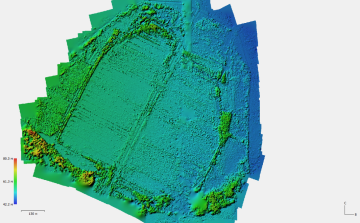Towards Green Economy: Carbon polygon in Kaliningrad region
Anna Belova
Ph.D., Director
Centre for Scientific information, Immanuel Kant Baltic Federal University
Kaliningrad, Russia
Nikolay Belov
Ph.D., Associate Professor
Immanuel Kant Baltic Federal University
Kaliningrad, Russia
Kaliningrad region one of the regions of Russia where the Carbon emission started to be measured for provision the steps towards the green economy. Carbon polygons are not just sites for research – they have a special international role and economic potential. In 2015, 72 countries of the world, including Russia, signed the Paris Climate Agreement. Under this agreement, by 2023, the EU plans to introduce a “carbon tax” for exporting companies that sell their goods in Europe.
Carbon polygons are specialized sites for conducting experiments to measure the emission and absorption of greenhouse gases. To do this, the scientific staff of the test site conducts ground and remote measurements to assess the change in the flow of climatically active gases (methane, carbon dioxide, nitrous oxide) in space and time. This is a section of the earth’s surface with a relief, structure of vegetation and soil cover that is representative for the given territory, where a set of measures is being implemented aimed at developing scientific, human and infrastructural potentials in the field of developing and testing technologies for monitoring the balance of climatically active gases of natural ecosystems. One of the main goals of such studies is the assessment of the integral values of the carbon balance.
In the Kaliningrad region, a carbon polygon was created by the Immanuel Kant Baltic Federal University on the drained Wittgiren peat bog in the Slavsk district. The polygon was given the name “Rosyanka” in honor of a rare plant that grows in a swamp, the hallmark of which is the unique ability to absorb large amounts of carbon dioxide. The first studies at the “Rosyanka” carbon test site in the Kaliningrad region were carried out by scientists and students of the Immanuel Kant Baltic Federal University in autumn 2021. At the Wittgirren peat bog, it is planned to study not only climate-active greenhouse gases, but also test technologies for rewetting the drained area. Wetlands are known to be natural “repositories” of carbon. The test site houses a mobile laboratory powered by solar panels. Express analyzes of freshly selected samples of peat, water, and air will be done here. And it is planned to work at the polygon on a rotational basis.
Research at the carbon test site in the Kaliningrad region is carried out using innovative equipment, including an unmanned aerial vehicle with a scanner and a red edge multispectral camera. With the use of airborne laser scanning, it is planned to create a high-precision model of the polygon relief, on which in the future modeling of carbon absorption by peat deposits will be carried out. The use of a multispectral camera will make it possible to carry out work to determine the diversity of vegetation in the experimental areas of the carboniferous polygon. Using various types of vegetation indices, it is planned to consider the relationship between carbon absorption and not only species diversity, but also the physical state of various types of vegetation (Figure 1).
Figure 1. An example of an aerial survey of the carbon test site in Kaliningrad

Already the first test flights using a multispectral camera showed interesting results and helped to clarify the exact boundaries of various plant communities on the carboniferous range. At the same time, it should be noted that the multispectral survey itself without ground studies is very probabilistic in nature and can be used to calculate carbon consumption over very large areas with a large margin of error. One potential challenge is to be able to scale research from a carbon polygon to urban green spaces, in a manner similar to that of our Asian colleagues. In addition, the site trains highly qualified personnel in the field of the latest methods of environmental control, promising technologies for the low-carbon industry, agriculture and municipal economy.
The “carbon tax” will be calculated based on the amount of carbon pollution accumulated in the production of goods. A special quota for the volume of sales of their products on the European market will be introduced for each enterprise. Having exhausted the limit, manufacturing companies will be forced to turn to the exchange of quotas to buy them from enterprises that have not used up theirs. The creation of carbon polygon will expand the absorbing potential for the processing of carbon dioxide, as well as control the limits of manufacturing enterprises.
Expert article 3255
>Back to Baltic Rim Economies 3/2022
To receive the Baltic Rim Economies review free of charge, you may register to the mailing list.
The review is published 4-6 times a year.
